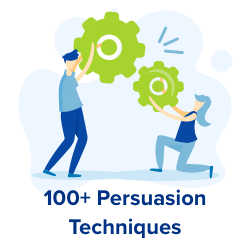5 Tips For Your Homepage Design Based on Psychology
Online e-commerce spending figures in the UK reached over 60 billion pounds in 2016. With a 15% average annual increase, the outlook is excellent and the market hasn’t even reached its full potential yet. From the many possible improvements to be made, market leaders are currently concentrating on conversion rate optimisation.
However, optimising a site can prove difficult. It’s more than just A/B testing, it’s about understanding what to optimise and especially how. Moreover, no two websites are the same and a new strategy needs to be created for each individual instance. It would not, for example, be appropriate to make exactly the same changes to an e-commerce site and a Saas site. Convertize, a new optimisation platform, has recently distinguished itself by developing a library of more than 250 tactics for online optimisation, combining both persuasion and personalisation goals. Even better, these proven tactics are all based on psychological research and neuromarketing.
Let’s start at the very beginning of the acquisition and conversion process: what is the first thing your visitors see on your site? Your homepage. That is why it is essential, if not indispensable, to optimise this page. It must be aesthetic, naturally, but above all efficient and user-friendly. It is often, however, this first step of the conversion process where potential is not fully realised.
In this article I will give some advice on this as well as try to generally lift the veil on the still too little understood question of optimisation. In order to do this, I will quickly present 5 tactics specifically designed for the optimisation of your homepage.
1- The Von Restorff Effect
The Von Restorff Effect describes our tendency to remember things that stand out or, in other words, the fact that we are more likely to remember the unusual. Therefore when an individual is confronted with a series of similar information (a list of words, shapes, etc.), they are much more likely to remember the one particular element that somehow distinguishes itself from the others and stands out in contrast to the set. Let me give you some examples of possible concrete applications to your homepage:
- Choose a colour that contrasts strongly with the rest of the site for your Call-To-Action.
- Make use of shapes that stand out from the rest of the homepage to draw attention to certain elements.
- Use a wide range of words, tenses and expressions to make sure important information catches the visitor’s attention.
2- The Picture Superiority Effect
We are naturally more drawn to, and affected by, images than by words. They appeal to our visual memory and stand out easily. They therefore have a much greater immediate and lasting impact and are an asset not to be neglected. They attract the visitor’s attention and anchor important information. I would advise you to:
- Insert images, photos and illustrations in place of text wherever it’s possible to do so without unbalancing your site.
- Insert your images at the beginning of your pages rather than in conclusion. Remember, you want to convey the message of your site as quickly as possible or you risk losing a potential customer.
3- Social Proof
The Social Proof effect is a cognitive bias that we are all exposed to on an almost daily basis. It is a principle of behavioural sociology showing that we tend, in the face of an unprecedented situation, to adopt the behaviour or the opinion of the majority. It is sometimes likened to the Group Effect. In the case of an e-commerce site, and more specifically for the optimisation of a homepage, the concrete applications of this bias are numerous.
I strongly encourage you to display your users’ feedback on your homepage, be it a positive comment, good score or even a full evaluation. This feedback will act as a guarantee of quality for your potential customers, influencing them at a vital moment when they are deciding whether or not they want to go further in the conversion process. I have discussed this subject in detail with a complete case study of BlaBlaCar’s homepage.
4- Processing Fluency
Processing Fluency characterises the ease with which we are able to comprehend information. It can be improved upon by using a number of factors such as clean aesthetics, the repetition of key terms, or even by using a rhyme. The easier your website is to read, the higher the conversion rate will be. It’s the never-ending search for simplicity. On your site, from homepage to payment, be sure to:
- Limit animations, unnecessary information, or purely decorative design.
- Slow down the rhythm of your page and the key messages so as not to blur your message. You need to take your visitor’s comprehension time into account.
5- Gaze Cueing
Have you heard of the phenomenon that is “Gaze Cueing”? It’s a cognitive bias that describes how individuals have a natural tendency to follow the gaze of others. When applying this to optimise your site, you can:
- Make use of images representing people on your homepage and ensure that they are looking in the direction of the action you want your visitors to take. In other words, make sure any gazes featured on the screen are directed at your priority link or Call-to-Action.
Psychology and Homepage Design
Perfect optimisation can only be achieved with rigorous and continued dedication. As we have seen here, it is first necessary to analyse a site and its audience and then to determine what needs to be improved upon and, most importantly, how. Once the tactics are chosen, they must be implemented and A/B tested to measure significant results and make decisions regarding permanent effective changes to be made. Convertize has the advantage of offering all these factors on one platform as well as boasting a library of 250 tactics in addition to the ones we’ve looked at today.
You won’t be the first nor the last to consider this new global e-commerce dynamic. Many international firms, such as Booking.com, Airbnb and, of course, Uber, have already optimised their services using these very tactics. Where access to this service is generally very exclusive and costly, we’ve made it our mission to democratise it by launching a totally digital platform. Now it’s possible for everyone to implement neuromarketing onto their site and to speak directly to the hearts and minds of their customers.



